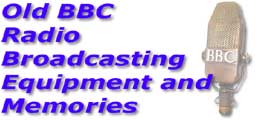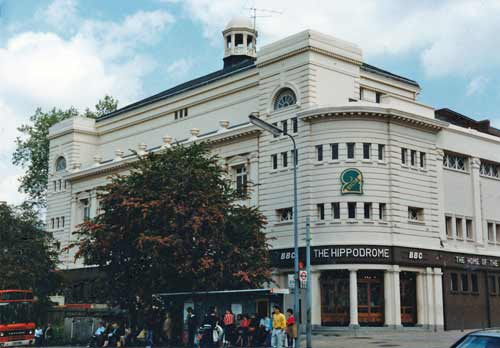
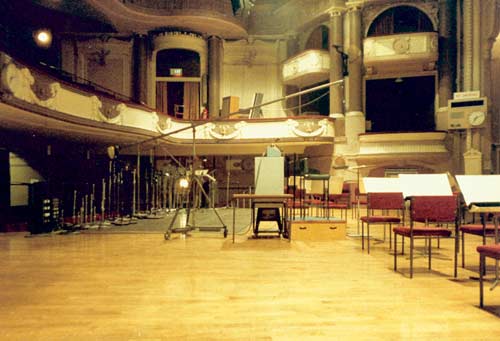
The BBC took out a long leasehold in the late 1960s initially using the building as a television studio. In 1972 it was converted into a radio studio and concert hall with reduced capacity of 700 seats and it became the home of the BBC Concert Orchestra and Radio Orchestra, taking over from the lease-expired Camden Theatre. It was equipped with a Neve console fitted with 32 channels in four fixed groups of 8, plus four independent channels. With full EQ on all 32 channels (but no dynamics) and stereo panning (but no stereo channels) it was a great improvement on previous BBC Radio multichannel music consoles.
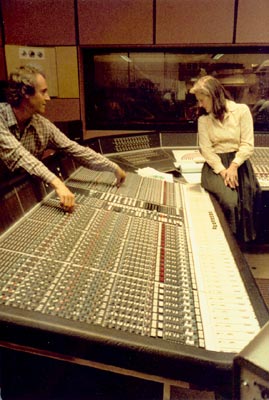
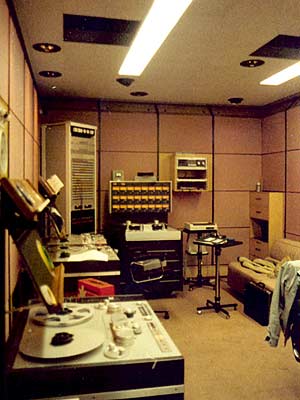
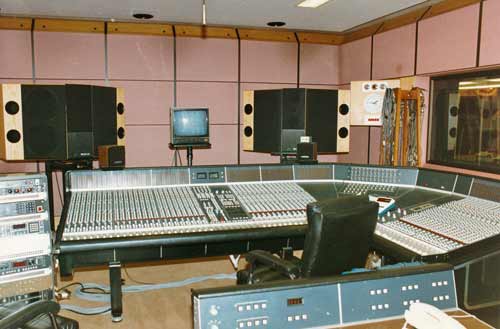
The Neve was replaced by an SSL 4K in 1984, at which time
the control room was enlarged by incorporating the separate recording channel
and building a machine room to house the multi-track tape machines
and SSL rack. The large monitors were KEF KM1s. The photos above were taken at this time by John Talbot-Jones
and the one to the left by Nick Jennings c.1987.
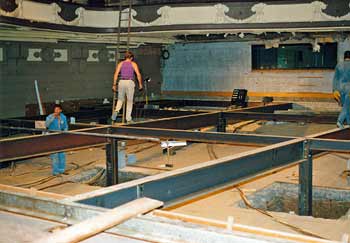
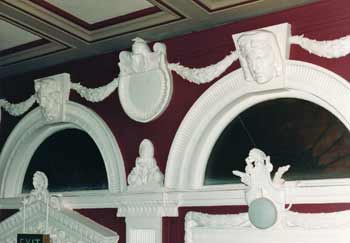
A floor completely covering the stalls area on a permanent support was required, together with redecoration of the auditorium and improvements to the air conditioning and lighting. This work was carried out in 1986/7 and was photographed by Nick Jennings.
The photos show the new support structure in place with the original stage exposed, some of the plasterwork, damaged areas of which were restored by taking moulds from other areas, a corner of the restored studio and part of the ceiling.
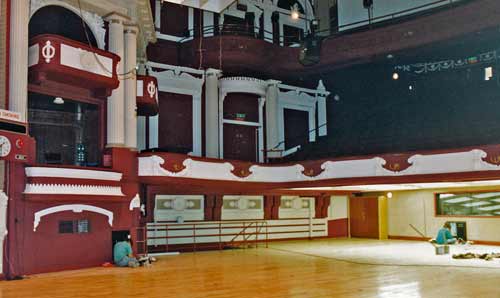
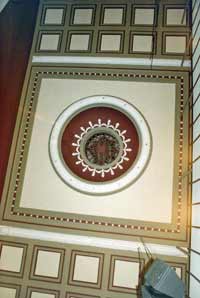
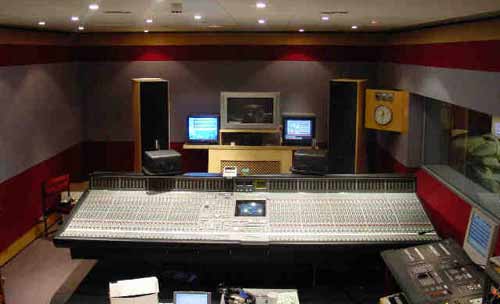
The console, like its predecessors, was fitted at right angles to the window onto the stage, giving the SM an excellent view of the performers. Between the two PMC monitor stacks, above the fretwork cupboard housing the Bryson power amps, was a Sony wide screen TV flanked by two JVC video monitors, the first of which could show a view of the stage from the rear, giving the SM a sight of the conductor from the orchestra's viewpoint. This monitor could be switched to show the Studer A800 in the apparatus room across the corridor, giving a whole new meaning to confidence monitoring, whilst the second JVC was used for the console's automation screen.
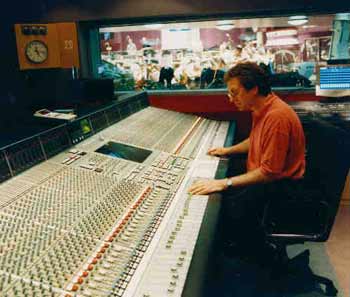
The jackfield followed BBC practice in being extremely comprehensive and thus very large - 19 double rows of 48 bantam jacks, a total of 1824. These included 120 mic lines from various distributed studio pattresses, with transformer-fed split feeds for the PA mixer, a 32-channel Soundcraft K3 situated in the centre of the audience seating in the balcony area. The balcony provided an excellent example of the difficulties which Radio Resources encountered during the refurbishment of the Grade 2 listed building because of the conflicting demands of English Heritage and the Health and Safety Executive. The Heritage approach, naturally, was to require any work to result in the closest possible approximation to the original state of the theatre, and the colour of the paintwork took many hours to agree. The H.S.E., however, expressed concern about the safety of people venturing into the front row of the balcony, as this, like most contemporary buildings, was built with no safety rail on top of the front ledge. No rail, as it will spoil the period renovation, said English Heritage. No rail, no usage, said the H.S.E., insisting on blocking off the front row with very non-Heritage red-striped tape. One cannot help wondering about all the other London theatres with similar balconies, or asking why the beautifully-restored ceiling is allowed to be obscured by the enormous TV lighting grid.
On September 24th 2001 the reopening of the Hippodrome was celebrated by a launch party attended by Jenny Abramsky, then Head of BBC Radio. Some few weeks later the spot where she (and the author) had been sitting was devastated by tons of plaster and cement when the auditorium ceiling collapsed. The theatre was closed permanently and the technical equipment, which was unaffected, was relocated.
If you have memories or photos of this studio which could be added to this page please get in touch using the 'Contact' link below.
